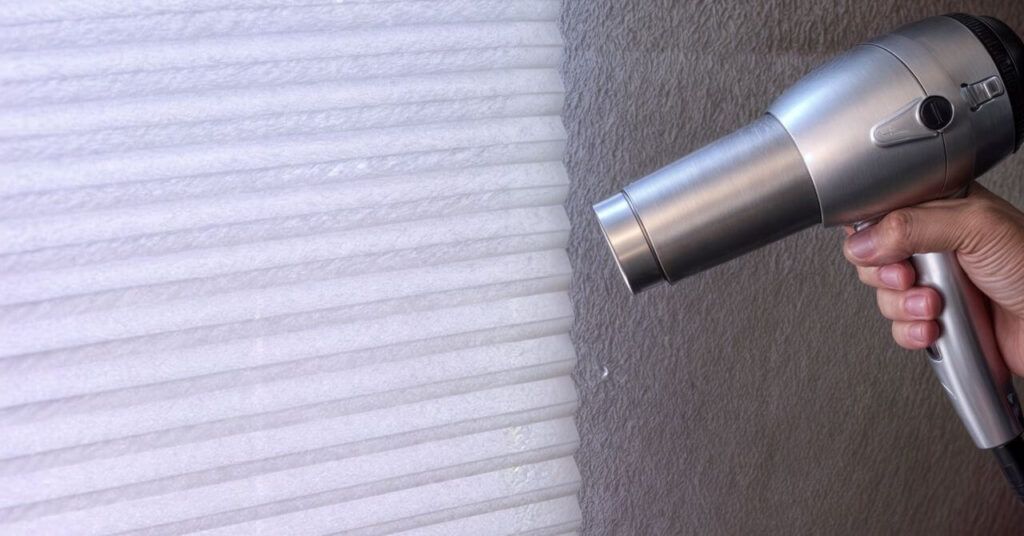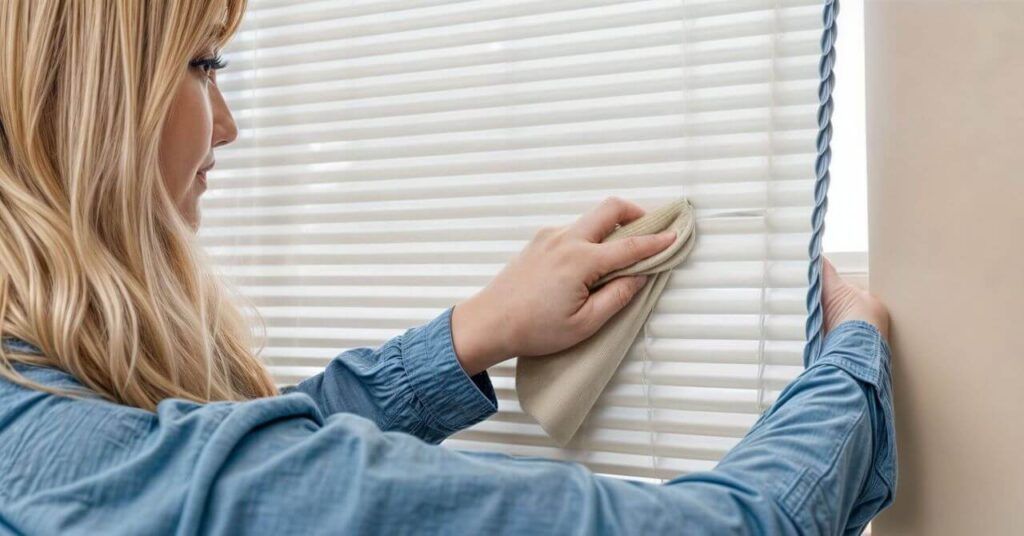Cellular shades are a popular choice for homeowners seeking both style and energy efficiency. Their unique design, which features air-trapping cells, provides excellent insulation, helping to reduce energy costs. However, these same characteristics can make cleaning them a bit challenging due to dust and debris accumulation. Understanding how to clean cellular shades properly can extend their lifespan and ensure they remain a beautiful part of your home’s interior.
Choosing the Right Cleaning Products for Cellular Shades

Understanding the Material of Cellular Shades
Before selecting a cleaning method, it’s crucial to identify the material of your cellular shades. Most are made from soft fabrics such as polyester, which can be sensitive to harsh cleaning agents. Identifying the material will guide you in choosing the safest and most effective cleaning solutions.
Recommended Cleaning Products Based on Material Types
- Fabric Shades: Opt for gentle, fabric-safe cleaners. A solution of mild detergent and lukewarm water works well for most fabric shades.
- Vinyl Shades: These can handle slightly more robust cleaning solutions, but it’s still best to avoid harsh chemicals that could damage the material.
Eco-Friendly Options for Cleaning Cellular Shades
For an environmentally friendly approach, consider using a mixture of white vinegar and water. This natural solution can effectively remove light stains and dust without the use of toxic chemicals.
Proper Cleaning Techniques for Cellular Shades

Dusting: The First Step in Cleaning Cellular Shades
Dusting should be your first line of defense in maintaining cellular shades. Use a soft brush attachment on your vacuum cleaner to gently remove surface dust. Alternatively, a microfiber cloth can pick up dust without leaving residue.
Spot Cleaning for Stains and Spills
When dealing with stains, spot cleaning with a mild detergent solution is recommended. Apply the solution with a soft, clean cloth, dabbing gently at the stain. Avoid rubbing, which can damage the fabric’s surface.
Deep Cleaning Methods for Thorough Maintenance
When you need to clean cellular shades deeper, especially if they are heavily soiled, professional ultrasonic cleaning is a safe and effective option. This method uses high-frequency sound waves to clean fabrics deeply and gently, reaching areas that traditional cleaning methods cannot.
Common Mistakes to Avoid During Cellular Shades Cleaning

Maintaining the pristine condition of cellular shades requires not just regular cleaning but also an awareness of what not to do. Here are some common pitfalls to avoid:
Using Harsh Chemicals That Can Damage the Material
Harsh chemicals can cause irreversible damage, such as discoloration, fabric breakdown, and weakening of the adhesive components within the shades. Opt for pH-neutral cleaners or a homemade solution of water and mild detergent. For tougher stains, a small amount of baking soda can gently lift stains without the harshness of chemical cleaners.
Incorrect Methods of Cleaning That May Cause Deformation or Tearing
Aggressive cleaning methods can stretch, tear, or permanently deform the delicate structure of the shades. Use gentle, patting motions rather than rubbing or scrubbing. Support the back of the shade with your hand to prevent excessive pressure that could misshape the cells.
Neglecting to Dust Regularly, Leading to Build-up
Allowing dust and debris to accumulate can not only affect the appearance of your shades but also their functionality, as excessive build-up can interfere with the smooth operation of the shades. Incorporate the dusting of your cellular shades into your weekly cleaning routine. Using tools like a soft brush attachment on a vacuum or a hairdryer on a cool setting can effectively remove dust without physical contact that might compress or damage the cells.
Seasonal Cleaning Tips for Cellular Shades
Seasonal changes bring different challenges and opportunities for maintaining your cellular shades. Here’s how to adapt your cleaning routine to the seasons:
Spring Cleaning: Removing Accumulated Dust and Allergens
Take advantage of the spring’s renewing energy to conduct a thorough cleaning of your shades. This is the perfect time to address any allergens that have settled into the fabric over the winter. Consider using an anti-allergen laundry detergent for spot cleaning to help reduce the presence of allergens.
Summer Maintenance: Protecting Shades From UV Damage
UV rays can fade and weaken the fabric of your shades over time. During summer, when sunlight is most intense, consider using UV protective films on windows or adjusting your shades to minimize direct exposure. Regularly rotate the position of your shades throughout the day to ensure even exposure and prevent localized fading.
Fall Preparation: Cleaning Before Closing Windows for Colder Weather
Prepare your shades for the colder months by eliminating any dust or insects that might have accumulated during the open-window seasons. A comprehensive vacuuming with the brush attachment can help remove any debris from the summer and fall, ensuring your shades contribute effectively to your home’s insulation.
Winter Care: Preventing Moisture Build-up and Mold
The colder months can bring increased indoor humidity, leading to condensation and potentially mold growth on or around your shades. Use a dehumidifier in damp areas and ensure good air circulation throughout your home. Regularly inspect your shades for signs of moisture and address any issues promptly to prevent mold growth.
Tips for Maintaining Cellular Shades Between Cleanings
To keep your cellular shades looking their best between deep cleanings, consider these maintenance tips:
Regular Inspection for Damage or Wear
Regularly inspecting your shades can help you catch and address minor issues before they become significant problems. Pay attention to fraying edges, stuck cells, or any signs of wear that could affect the shade’s functionality or appearance.
Spot Cleaning Immediately After Spills or Stains Occur
The sooner you address spills or stains, the less likely they are to set and become permanent. Use a clean, damp cloth with a mild detergent solution to gently dab at the stain. Always test the solution on an inconspicuous area first to ensure it doesn’t affect the fabric’s color or texture.
Proper Storage During Seasons When Shades Are Not in Use
If you decide to remove your shades for any reason, store them in a cool, dry place away from direct sunlight. Roll the shades loosely rather than folding to prevent creasing, and cover them with a breathable fabric to protect against dust.
Key Takeaways
Maintaining your cellular shades doesn’t have to be a daunting task. With the right care and regular maintenance, you can keep your shades looking as good as new, preserving their beauty and functionality for years to come. Remember, the key to keeping your cellular shades in top condition is gentle, regular cleaning and prompt attention to spills and stains.
